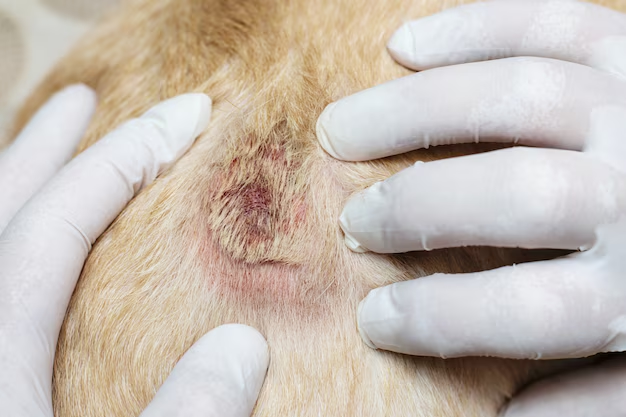
Cat Herpes: Feline herpesvirus (FHV-1) is one of several viral causes of upper respiratory infections in cats. The context of this form is that it cannot contract any herpes in humans regardless of the term “herpes” might conjure up images of human cold sores, feline… Pet owners need to diagnose this condition in time so that proper care can be provided and also the disease does not spread. In this article we will cover everything there is to know about cat herpes, including symptoms of the virus, how it spreads from one animal to another, and treatment and prevention techniques.
1. What You Need to Know About Feline Herpesvirus
Feline herpesvirus (FHV-1) is a common infection caused by the highly contagious virus that affects the upper respiratory tract of cats. It is a member of the Herpesviridae family (in which it forms part of the Alphaherpe sub-family) and appears to be adapted- or even restricted -to infect felines.
Characteristics of Cat Herpes
Viral morphology:
FHV-1 is an enveloped virus containing a double-stranded DNA genome.
Tropism:
Preferentially binds to mucous membranes of the nose, throat, and eyes which leads primarily to respiratory symptoms.
2. Feline Herpesvirus Symptoms
Summary: FHV-1 Infection in cats can vary from asymptomatic to severe, contingent on the general health and immune system of the cat.
Common Symptoms:
- Sneezing and Cough: Because rhinovirus inflames the upper breathing system, regular sneezes are likewise typical.
- Nasal discharge: Mucus, often thick and colored (green or yellow)
- Conjunctivitis: Redness, discharge, and squinting due to inflammation of the lining of the eye.
- Fever: This symptom usually occurs in a body when the patient is going through other symptoms.
- Refusal to eat: cats may be seen not wanting food as a result of pain and congestion.
- Mouth Ulcers: In some rare cases, the virus can lead to painful mouth and throat ulcers.
Severe Symptoms:
Lastly, severe cases can result in secondary bacterial infections and pneumonia.
If left untreated, kittens and geriatric cats are at risk of developing chronic respiratory issues after contracting pneumonia from long-term infections.

3. Feline Herpesvirus Transmission
Brief: FHV-1 is transmitted via direct contact between infected cats or fomites. Knowledge of how it spreads is important in preventing and controlling this disease.
Modes of Transmission:
- Direct Contact (cats can catch the virus from a cat nose to nose or grooming)
- Inanimate Objects: Viruses can survive for a few hours to days on inanimate objects like bedding, food dishes, and floors which may result in indirect transmission.
- Cat-to-Cat Transmission: FHV-1 is an airborne, contagious disease so cats can contract it from sneezing or coughing droplets.
At-Risk Populations:
- Kittens: Kittens have an underdeveloped immune system making them more susceptible.
- Immunocompromised Cats: Both cats with an underlying illness or aging process can have weaker immune systems and, therefore are more at risk.
- Environments with Many Cats (Multi-Cat Households): Fakers spread easier in houses containing many cats.
4. Feline Herpesvirus Has a Diagnosis
Diagnosing FHV-1 is done based on clinical signs, history, and laboratory tests. It is vital for appropriate treatment.
Diagnostic Methods of Cat Herpes:
- Physical Examination: Many times, veterinarians will start with a physical examination and review of your pet’s history to look for typical symptoms.
- Polymerase chain reaction (PCR) testing: Polymerase chain reaction test can detect viral DNA in nasal/oral swabs.
- Serology Blood tests can detect antibodies against the virus, although they are not used as frequently for acute diagnosis.
- Cytology: samples taken from nasal or conjunctival swabs show viral particles.
Challenges in Diagnosis:
- Cross Clinical: Symptoms cross with other respiratory diseases, so it is important to do a differential diagnosis.
- Complex Cases: Chronic or recurrent infections are complex cases that may be more challenging to diagnose and require long-term assessment.
5. How to Treat Feline Herpesvirus
FHV-1 has no cure so treatment is aimed at symptom relief, boosting the cat’s immune system, and stopping secondary infections.
Treatment Approaches:
- Antiviral Medications: Drugs such as famciclovir that eliminate viral replication and symptoms.
- Palliative treatment: Keeping the animal warm and in a humid environment may help its breathing discomfort, supporting this way to recover from illness.
- Antibiotics: If there is any evidence of secondary bacterial infections, then a course of antibiotics will be implemented.
- Management: Eye Treatments -Topical antiviral or antibiotic eye drops for conjunctivitis
Home Care Tips:
- Water: Make sure the cat remains hydrated adequately.
- Nutrition- It is recommended to provide soft, bland food for appetite to be stimulated.
- If a cat has an upper respiratory infection, it’s particularly important to create the healthiest and cleanest environment possible.

6. Can Feline Herpesvirus Be Prevented?
Prevention and Control: Of course, preventing the spread of FHV-1 consists primarily of reducing viral transmission from cat to cat while also improving overall feline health.
Prevention Strategies:
- Vaccination: The leading cause of death from FHV-1 is upper respiratory tract infection and related complications, mortality may be reduced by vaccines.
- Hygiene Maintenance: Clean and disinfect the vicinity where cats live, including food & water bowls
- Quarantine — ensure new or infected cats are isolated to stop the virus from spreading.
- Stress Management: Reducing stress in multi-cat households can help the immune system stay strong.
Long-Term Management:
- Routine vet visits: Maintaining regular veterinary care can help keep chronic symptoms in check and anticipatory.
- Enhanced immunity: Ensure the cat gets proper medication and avoids stress, this can help boost its immune response.
7. Cats with Feline Herpesvirus
Intro: Knowing how to care for a cat with FHV-1 is all about understanding their condition and giving the right type of care and affection.
Daily Care Tips:
- Monitor symptoms: If the cat seems to be getting worse or isn’t improving, check with a local vet.
- Avoid Environmental Stressors: Offer a comfortable and peaceful recovery place for your cat.
Social Considerations:
- Family Education —This may include briefing other family members about the nature of FHV-1 and its transmission for appropriate care in handling it as well.
- If you have a Multi-Cat House (click to learn more), put into place measures to reduce the likelihood of transmitting the virus between cats.
Emotional Support:
- Gatherin’: They provide emotional support to each other, and the act of bonding helps reduce overall stress.
- Final Words: If the problem becomes really difficult to handle then professionals, for example,e veterinarians or pet behaviorists should be consulted given that treating these behaviors is far harder than preventing them in advance.
Conclusion
Cat herpes is a major health risk for some cats, especially those living in multi-cat environments or with poor immune systems. Knowing what this virus is, how it shows itself and shares, and the way to treat FIP offers cat homeowners an efficient means of understanding tips on ↓ Read the remainder of this entry… Although a cat can never be completely cured of FHV-1. There are several healthcare tactics and basic hygiene measures that when employed correctly will greatly enhance the quality of life of an infected feline, while at the same time dramatically decreasing the risk that other kitties might contract this virus too.
FAQs
The answer: No, feline herpesvirus (FHV-1) only affects cats and does not infect people. The virus is feline only and human beings are not in any danger from it. Although this being said, having good hygiene will still be of pivotal importance in the case to make sure we are not just passing one germ from one surface endpoint another.
Answer — Different diseases that appear almost the same as FHV-1: Sneezing, nasal discharge, or running nose and eye discharge can lead to other upper respiratory phenotypes these are discussed later. A veterinarian will assess your cat’s symptoms, conduct diagnostic tests, and perform PCR testing or cytology to check for the presence of FHV-1. For more information please consult your local vet for a correct diagnosis.
Response: There is no cure for feline herpesvirus at present. Treatment is often aimed at controlling the symptoms, supporting the immune system, and preventing further (secondary) infections. Supportive care and antiviral medications may lessen symptoms but the virus persists in the cat’s system, with potential reactivation when your pet is stressed or sick.




